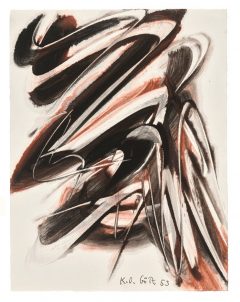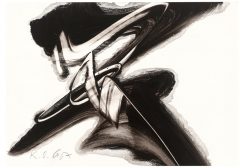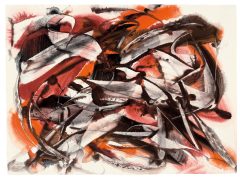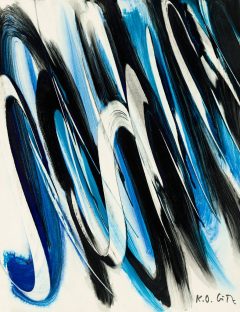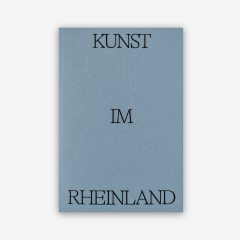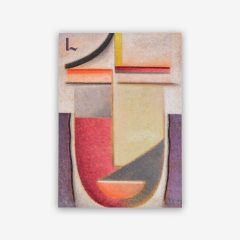Karl Otto Götz
Ohne Titel
1957
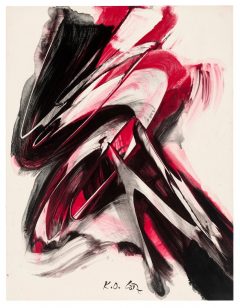
Gouache on cardboard
64.5 × 50 cm / 25 3/8 × 19 11/16 in
Signed and verso again signed and dated also "Sammlung Rissa Götz" stamped and on the old underlying cardboard signed, dated and "K.O.Götz o.T. 1957 rot" inscribed
The work has been registered for the catalogue raisonné of the works on paper currently being prepared by the K.O. Götz and Rissa Foundation, Niederbreitbach-Wolfenacker
Price includes German VAT. Shipping costs are not included. All prices are subject to change and availability. Change region and currency
We thank Joachim Lissmann, K.O. Götz and Rissa Foundation, for the kind confirmation of the work’s authenticity
Collection Rissa-Götz; Schürenberg Kunsthandel, Aachen; Private Collection North Rhine-Westphalia
- Galerie Ludorff, "Kunst im Rheinland", Düsseldorf 2023, S. 39
- Galerie Ludorff, "Neuerwerbungen Herbst 2022", Düsseldorf 2022, S. 50
Karl Otto Götz began to explore abstraction as early as 1933. However, his early work, created before the Second World War, was almost completely destroyed during a bombing raid on Dresden. After the war, Götz was the only German artist to become a member of the international COBRA group of artists around Karel Appel, Asger Jorn and Corneille in 1949. His non-objective painting was a central contribution to the worldwide movement in the visual arts, which broke new formal ground after 1945 by initiating the radical dissolution of the classical principle of form.1
From 1952 onwards, Götz found his typical, gestural style of painting. His compositions are well thought out. Before Götz began an oil painting, he first made studies in gouache, acrylic or pencil in order to develop a basic composition. Only when the idea for the painting has matured does he take up brush and canvas. As he often works in large formats, the canvas lies on the floor in front of him. The previously conceived and precisely calculated forms and structures are then transferred to the canvas in a matter of seconds. In our 1957 gouache on cardboard, you can clearly see the artist's movements during the creative process and the resulting dynamics of the forms. Using just one colour - red, black and white - he creates a harmonious composition that seems to move both in time and space.
The artist's success initially began abroad in the mid-1950s: France, the USA and Italy honoured the artist early on with solo exhibitions.2 He was represented at the Venice Biennale in 1958 and took part in documenta II in 1959. From 1959 to 1979, he taught as a professor at the Kunstakademie Düsseldorf. Numerous important artists such as Gerhard Richter, Sigmar Polke, Gotthard Graubner and Franz Erhard Walther were among his students.
1 This common movement with regional differences has gone down in art history as "Abstract Expressionism" in the USA, known in France as "Tachisme" or "Abstraction Lyrique" and in Germany as "Informel".
2 Götz exhibited in France as early as 1947 and in the USA in 1954.
